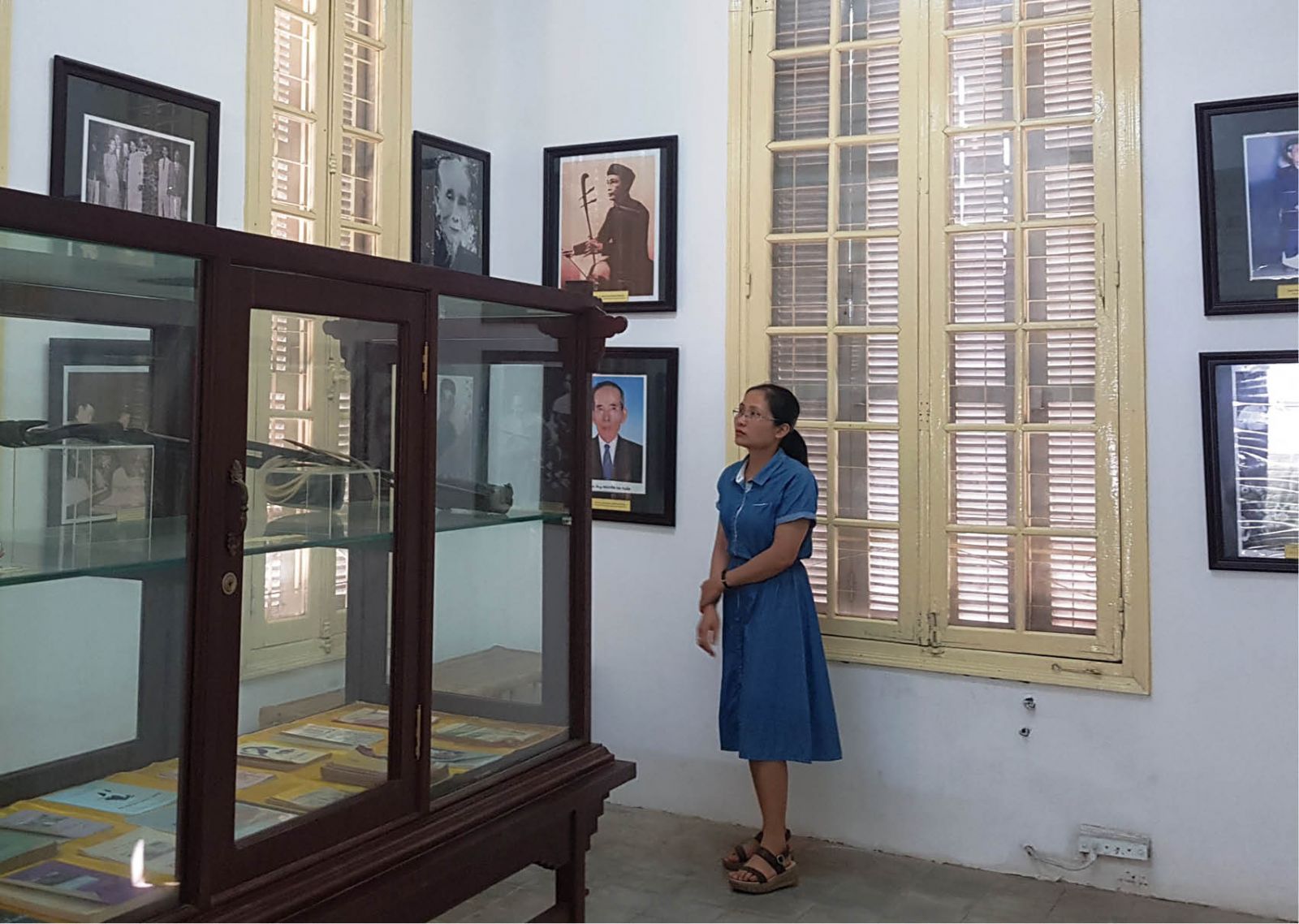
Due to the impact of COVID-19, the number of visitors to many cultural spaces and museums will remain sparse
With the experience of operation of art centers and museums, most of them predict that the sparseness of visitors will last long. Under this circumstance, scenarios have been set up to cope with the post-COVID-19 crisis.
Despite their reopening, the atmosphere is still quite gloomy at Le Ba Dang Art Center and Diem Phung Thi Art Center (of Hue Fine Arts Museum) on Le Loi Street, in the center of Hue City. Both centers of Hue Fine Arts Museum had welcomed hundreds of visitors, mostly international ones before COVID-19 outbreak.
Ms. Dinh Thi Hoai Trai, Director of Hue Fine Arts Museum, admitted that the difficult situation would not only stop here, but also last longer later. According to Ms. Trai, after being allowed to reopen, the number of visitors to the sites is very small. Although the tickets were completely free on the occasion of April 30 and May 1 holidays, the number of visitors was still not significant.
Nevertheless, the unit must still welcome visitors as normal and strictly implement measures for COVID-19 prevention and control such as cleaning the art spaces, and measuring body temperature of visitors, etc., so as to ensure the safety. “It is the common situation of many attractions, and other cultural spaces in the province. Particularly, the two art spaces - Le Ba Dang Art Center and Diem Phung Thi Art Center, which have been attracting mostly foreign visitors and very few local ones, will face a lot of difficulties in the coming time," Ms. Trai said.
However, despite all these difficulties, Ms. Trai said that it was also the time to target local and domestic visitors. In order to target this market, the unit is also setting up plans, consulting the superior to introduce ticket exemption and discount in the coming time. In particular, focusing on connecting and working with travel agencies to stimulate demand.
Particularly, the exhibition and creating activities delayed during the COVID-19 outbreak were also being planned to move to the third and fourth quarters depending on the situation and developments of the epidemic. “We are still open, and maintaining the reception of visitors while focusing on the professional stages involved in the display and preservation of works,” Ms. Trai shared.
Located next to the unit, Hue cultural display space (at 23-25 Le Loi Street, formerly Hue Cultural Museum, which has just been merged into two other units and has a new name as Hue City Center for Culture, Information and Sports) is the same. Although it has been reopened, the number of visitors to the space displaying Hue traditional folklore is still sparse. According to the explanation of a representative of this unit, visitors are still concerned about the pandemic and restricting to come to public places to ensure their health.
“The most regretful thing is the Space for Hue Singing Chamber (Ca Hue), which was held regularly weekly and had always attracted visitors. However, due to the impact of COVID-19, it is impossible to gather many people at the same time, thus, this activity cannot be reopened yet. The remaining activities are also being maintained and welcome visitors,” the representative of this unit shared. S/he added that it was monitoring the situation to reopen the Space for Chamber Ca Hue, as this was a traditional cultural space that a lot of people were interested in.
Besides, many programs scheduled during Hue Festival also have to be postponed because the festival is delayed for several months, there will be specific plans depending on the situation.
Though the number of visitors to Hue Museum of Royal Antiques is larger than that of other museums, it is still "negligible" compared to the number recorded in the period before the COVID-19 outbreak. Ms. Huynh Thi Anh Van (Ph.D.), Director of Hue Museum of Royal Antiques, said that during the week the museum was opened for free, it still welcomed less than 100 visitors per day. For other museums at this time, it is a dreaming number, but for the unit, it is only a one seventh of the number of visitors compared to that of the weekdays before.
According to Dr. Van, many museums around the world have applied technological virtual tours both for free and with fee. However, in Vietnam in particular and in the museums in Hue, it is still not applicable. In order to do this, a roadmap is required, depending on the local characteristics and the advantages of the museums to calculate appropriately and adapt to the recent time. "We can also do it, but it takes time," Dr. Van affirmed.
Story and photo: NHAT MINH